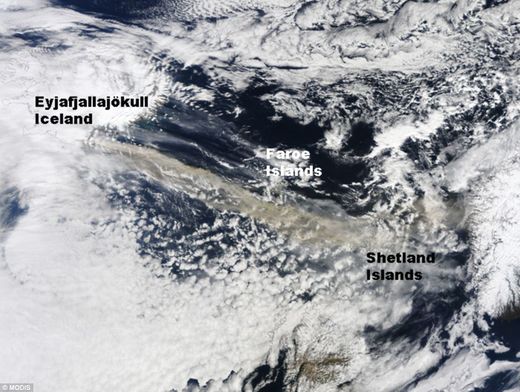
© Associated PressSafety measures: An aircraft maintenance worker covers a jet engine at Belfast City Airport, Northern Ireland, yesterday as a cloud of volcanic ash made its way across Europe
One million Britons were stranded abroad last night by the travel paralysis caused by volcanic ash.
The unprecedented air lockdown was extended until at least 7am today but the chaos and confusion will drift well into next week.
Some holidaymakers in Spain were told they face a ten-day wait for a flight home and the delays - coming at the end of the Easter holiday period - intensified problems caused by the massive Icelandic eruption.
Schoolchildren, and their teachers, will be missing from classrooms on Monday, and Britain faces shortages of air-freighted food as the impact of the vast spume of ash begins to bite beyond air travel.
Fruit and vegetables including lettuce, grapes, spring onions and asparagus may be missing from many supermarket shelves next week and firms specialising in flying in produce from overseas are also warning of higher prices.
The transport giant Norbert Dentressangle said activity at its perishable air freight handling centre at Heathrow, the UK's largest, was at a standstill. The result will be a three-day shortfall in the supply of products including prepacked fruit salads and flowers.
It said that while there are enough products on shelves and in warehouses to see stores through the weekend, supermarkets will be 'severely impacted' next week.

